In the ever-evolving landscape of digital marketing, email remains a powerful tool for engaging audiences and building lasting relationships. Two platforms that have gained significant traction in recent years are ConvertKit and Substack. Each offers unique features and benefits, catering to different needs within the email marketing ecosystem. As content creators, marketers, and businesses navigate the complexities of online communication, understanding the strengths and weaknesses of these platforms becomes crucial. This comprehensive comparison delves into the intricacies of ConvertKit and Substack, exploring their features, user experiences, and potential impact on your marketing strategy.
Key Facts
- ConvertKit offers advanced automation and customization, ideal for complex marketing strategies.
- Substack focuses on simplicity and content creation, perfect for writers and publishers.
- Both platforms provide monetization options, but with different approaches and fee structures.
Navigating the Email Marketing Landscape: ConvertKit vs Substack
ConvertKit and Substack represent two distinct approaches to email marketing and content distribution. ConvertKit, with its robust feature set and focus on automation, caters to marketers and businesses seeking comprehensive control over their campaigns. As Matt Giaro notes, “ConvertKit’s visual automation builder makes it easy to set up and manage complex workflows,” highlighting its appeal to those with intricate marketing needs.
On the other hand, Substack offers a streamlined, content-first approach that resonates with writers and publishers. Its simplicity is a double-edged sword, as one user review on Mailmodo states, “Substack’s focus on content creation over design can be limiting for those seeking more customization options.” This stark contrast in philosophy underscores the importance of aligning your choice with your specific goals and expertise.
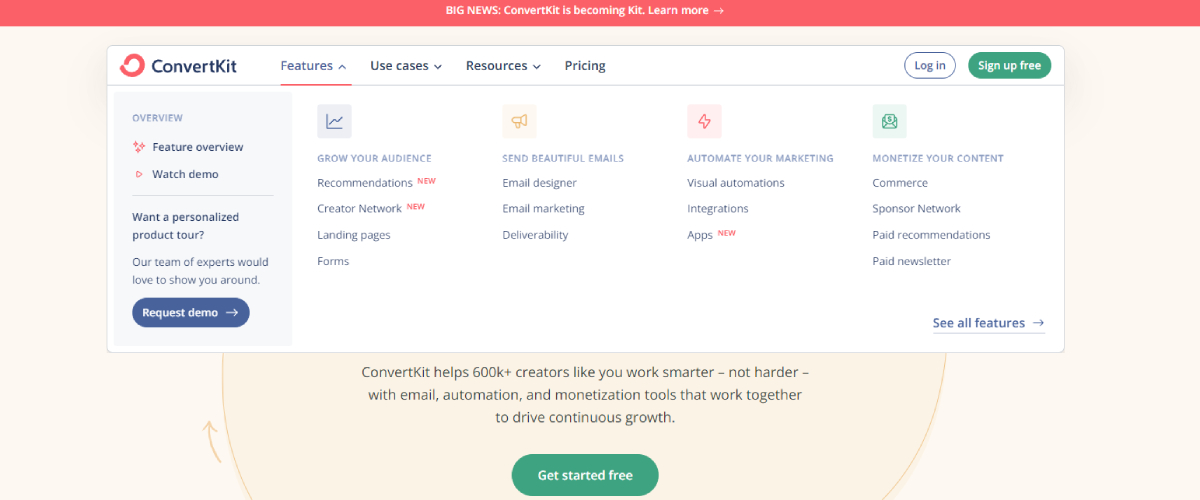
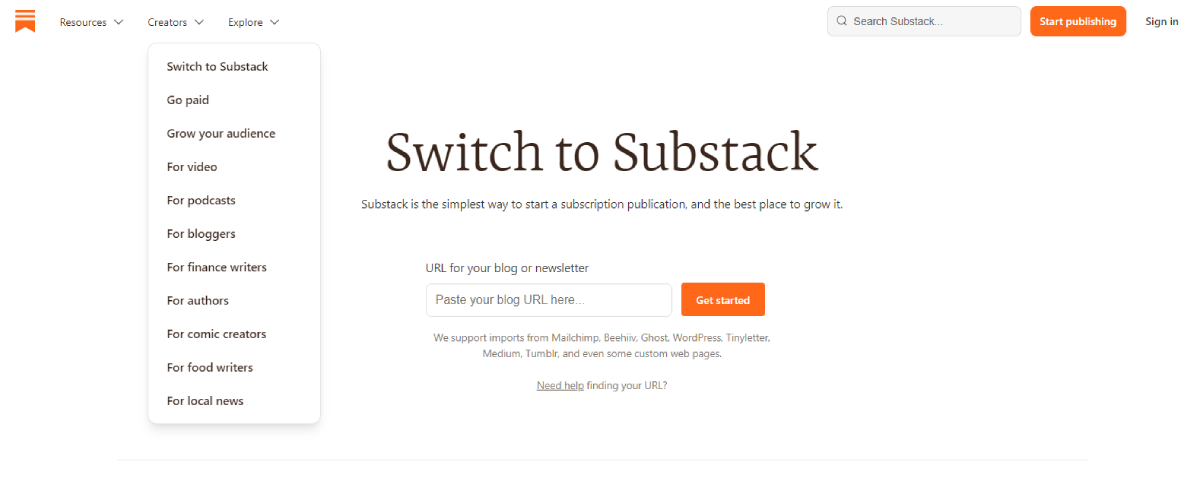
User Interface and Ease of Use
When it comes to user interface and ease of use, both platforms have their merits. ConvertKit’s clean and intuitive interface is highly regarded, with users praising its navigation and simplicity. The platform’s design focuses on making complex tasks manageable, allowing marketers to create sophisticated campaigns without getting lost in technicalities.
ConvertKit’s user-friendly approach extends to its email template system, offering a wide range of customizable options that maintain brand consistency while enabling creative flexibility. Substack takes simplicity to another level, offering a minimalistic interface that allows users to focus entirely on content creation without technical distractions. This stripped-down approach resonates with writers who prefer to concentrate on their craft rather than grappling with design elements or complex marketing tools.
Pricing Models and ROI Considerations
Pricing models differ significantly between the two platforms, impacting potential return on investment (ROI) for users. ConvertKit operates on a subscriber-based pricing model, offering a free plan for up to 1,000 subscribers and paid plans starting at $25/month. This structure allows businesses to scale their email marketing efforts as their audience grows, with access to advanced features increasing at higher tiers.
The predictable pricing can help businesses budget effectively for their marketing expenses. Substack, in contrast, is free to use for sending emails but takes a 10% cut of any revenue generated through paid subscriptions. This revenue-sharing model can be attractive for content creators just starting out, as it eliminates upfront costs. However, as a newsletter grows in popularity and generates more revenue, the 10% fee may become a significant expense.
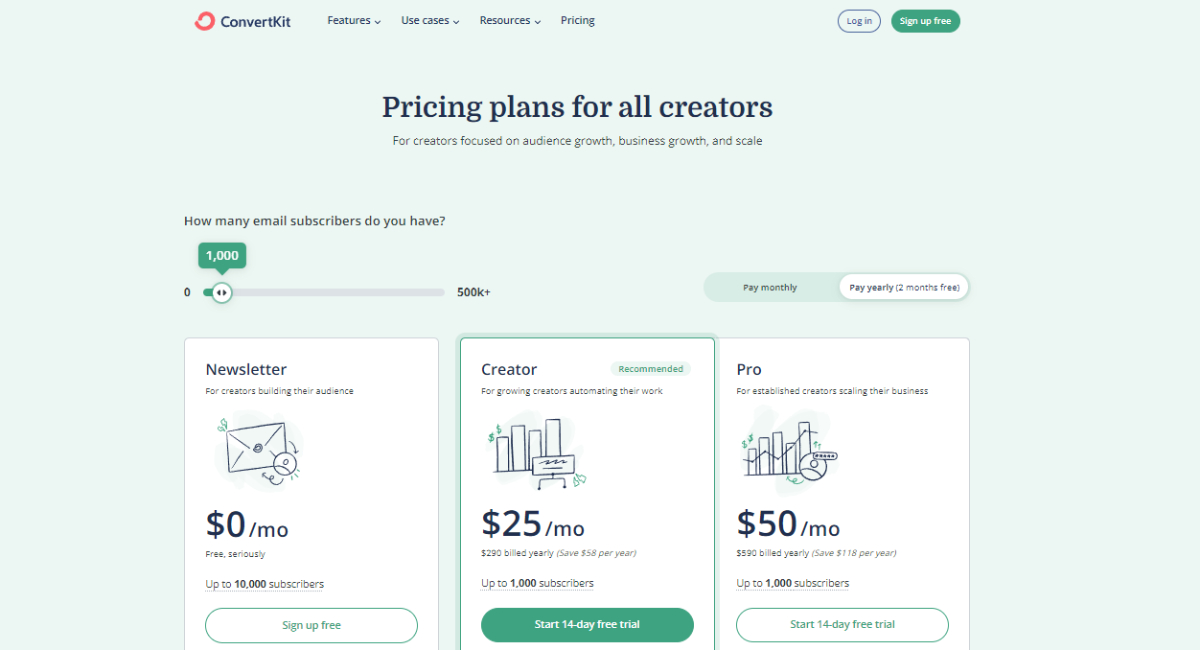
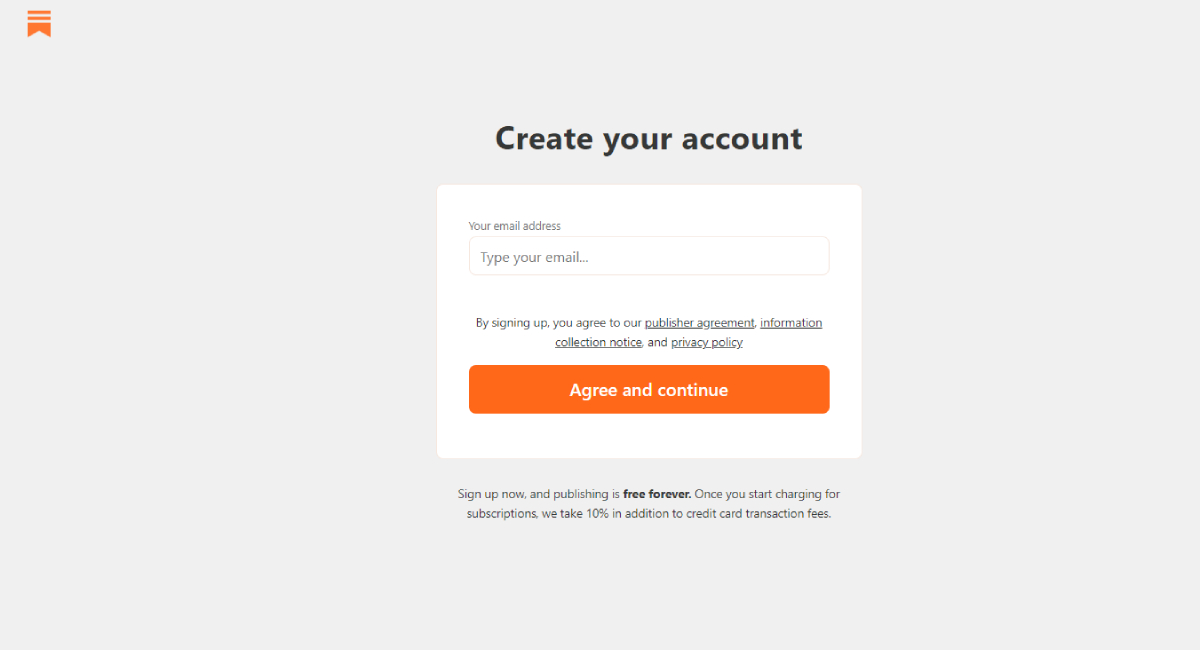
Advanced Features and Automation
For businesses and marketers looking to implement complex automation and segmentation strategies, ConvertKit clearly has the upper hand. Its advanced features allow for detailed audience segmentation, enabling marketers to target specific subsets of their subscriber base with tailored content. The platform’s A/B testing capabilities provide valuable insights into what resonates with audiences, allowing for data-driven optimization of email campaigns.
ConvertKit’s wide range of integrations with other tools and platforms enhances its versatility, making it a central hub for comprehensive marketing strategies. As one ConvertKit user shared, “The ability to create detailed email sequences and segment our audience has significantly improved our engagement rates.” These sophisticated tools empower marketers to create highly personalized and effective email campaigns that drive results.
Content Creation and Monetization
Substack shines in its simplicity and focus on content creators, particularly well-suited for writers and journalists looking to monetize their content directly. The platform’s straightforward approach to newsletter creation allows writers to concentrate on producing high-quality content without getting bogged down in technical details. Substack’s built-in audience and discoverability features can be a significant advantage for those starting out, providing exposure to potential subscribers within the platform’s ecosystem.
The ease of setting up paid subscriptions removes barriers for writers looking to monetize their work, with Substack handling payment processing and subscriber management. A Substack writer mentioned, “The ease of setting up a paid newsletter and the support from the Substack community have been game-changers for my writing career.” This testimonial highlights the platform’s strength in fostering a supportive environment for content creators.
Hidden Gems
1. Utilize ConvertKit’s Visual Automation Builder
Many users overlook the power of ConvertKit’s visual automation builder, which allows for complex email sequences and workflows. By mapping out your subscriber journey visually, you can create tailored experiences that increase engagement and retention. This feature enables marketers to design intricate automation paths without requiring extensive technical knowledge, making it accessible and effective for enhancing subscriber interactions.
2. Leverage Substack’s Built-In Discovery Tools
Substack has a unique algorithm that showcases your content to potential new subscribers within its platform. By consistently publishing high-quality content, you can tap into this built-in audience and grow your subscriber base organically without additional marketing efforts. This discovery feature helps content creators reach a broader audience, leveraging Substack’s ecosystem to enhance visibility and subscriber growth.
3. Implement Tagging in ConvertKit for Better Segmentation
ConvertKit’s tagging system is often underutilized. By tagging subscribers based on their interests or behaviors, you can send highly targeted emails that resonate more with your audience, leading to improved open and click-through rates. Effective tagging allows for precise segmentation, ensuring that your messages are relevant and personalized, which can significantly enhance the overall effectiveness of your email campaigns.
4. Cross-Promote Between Platforms
If you’re using both ConvertKit and Substack, promote your Substack newsletter through ConvertKit emails. This strategy can help you transition existing subscribers to a more monetized platform while leveraging the strengths of both systems. By cross-promoting, you can maximize your reach and revenue potential, utilizing ConvertKit’s robust email capabilities alongside Substack’s content monetization features.
5. Create Exclusive Content on Substack
Use Substack’s ability to offer paid subscriptions for exclusive content. This can include in-depth articles, special reports, or access to private discussions, encouraging free subscribers to convert to paid ones. Exclusive content creates added value for your subscribers, fostering loyalty and providing a steady revenue stream through premium offerings.
Innovative Solutions by Prism Reach
Company and Product Overview
Prism Reach is an innovative AI-powered SaaS solution designed to enhance the effectiveness of email marketing campaigns through deep personalization. This platform stands out by transforming how publishers and content creators engage with their audiences, using sophisticated AI algorithms to customize every aspect of newsletters based on subscriber behavior and preferences.
Prism Reach’s core functionality revolves around its proprietary AI technology, which clusters website content and social media posts into relevant categories. This AI uses a variety of data points to create detailed user avatars, enabling personalized newsletter content that incorporates factors such as location, engagement history, and predicted interests. The system’s ability to analyze vast amounts of data allows for highly targeted marketing strategies.
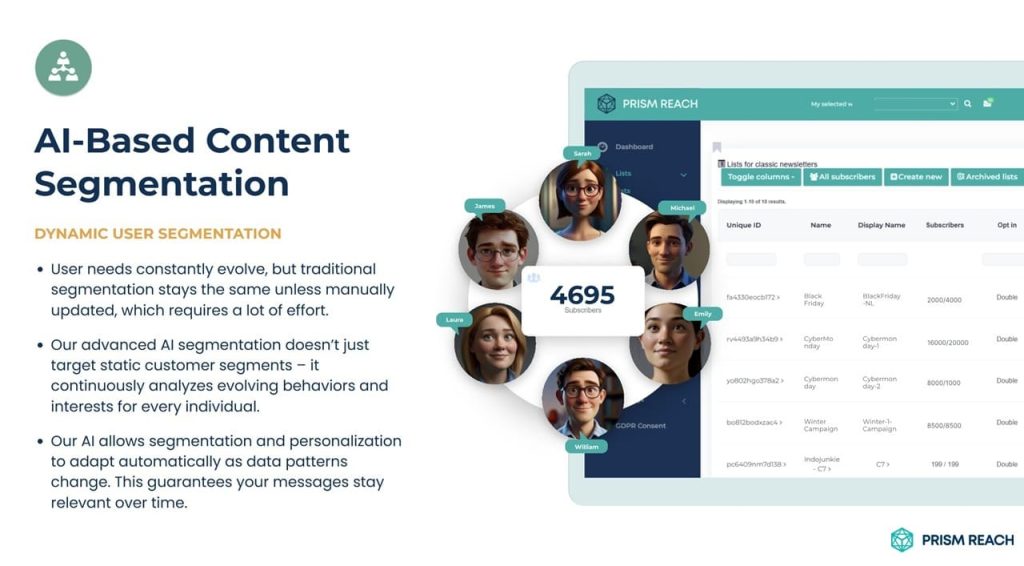
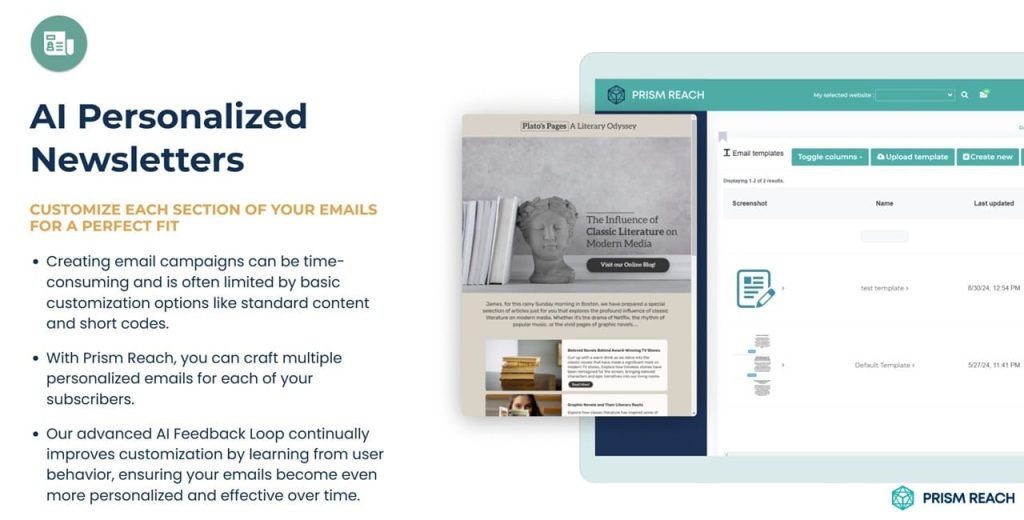
Target Audience
The primary users of Prism Reach are publishers across various platforms, including international media outlets, blogs, and forums. The company has also set its sights on expanding into the eCommerce sector, aiming to leverage its technology to enhance digital marketing efforts in this rapidly growing area.
Key Features
- AI-Powered Personalization:
- Content Clustering: Utilizes both open and proprietary AI models to categorize content effectively.
- User Avatars: Enriches user data for creating highly personalized profiles.
- Personalized Introductions: Generates custom introduction paragraphs for each subscriber using advanced data analytics.
- Optimal Sending Times: Uses predictive analytics to determine the best times to send newsletters, maximizing subscriber engagement.
- Seamless Setup and Integration:
- Quick Setup: The platform can be integrated within 10 minutes, making it user-friendly.
- One-Click Uploads: Facilitates easy migration of existing subscriber lists.
- AI-Enhanced Sign-Up Forms: These forms are designed to increase sign-up rates through AI-generated content tailored to the user’s context and improve GDPR compliance.
- Dynamic Content Selection: The AI determines the most relevant content for each subscriber, enhancing the personalization of each newsletter.
- Advertising Network and Swap Network:
- Provides a platform for targeted advertising similar to major online ad networks, allowing for precise ad placement based on subscriber data.
- Facilitates mutual promotion among publishers, broadening content reach and enhancing subscriber engagement.
- Advanced AI Features: Includes anti-spam checks and a focus on high deliverability, crucial for maintaining engagement levels and avoiding spam filters.
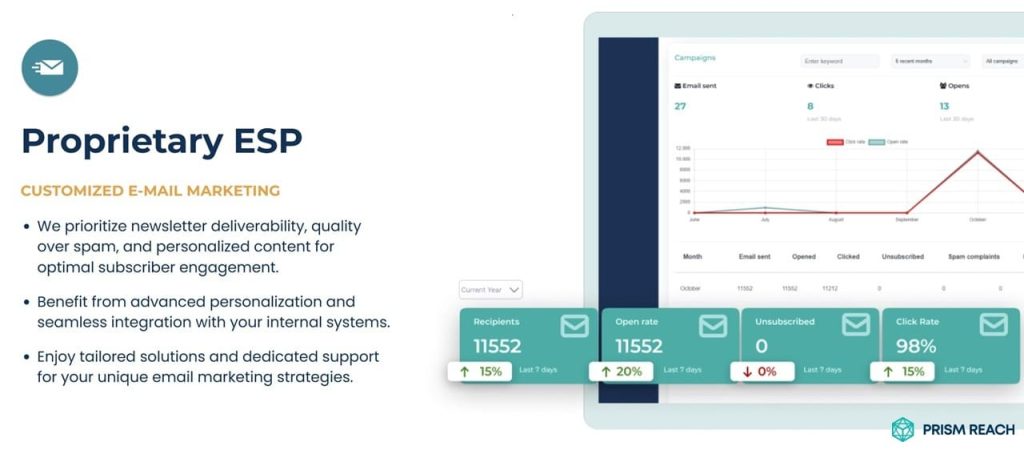
Benefits of Prism Reach
- AI-Powered Personalization: Enhances engagement by tailoring content to subscriber preferences, resulting in up to 40% higher engagement rates.
- Advanced Segmentation: Allows highly targeted campaigns, improving open and click-through rates through detailed audience segmentation.
- Seamless Integration: Easily integrates with existing platforms like ConvertKit and Substack, streamlining marketing efforts and enabling a cohesive email marketing strategy.
Hidden Gem: Utilize ConvertKit’s Landing Pages for Lead Generation
ConvertKit allows you to create customizable landing pages that can capture leads effectively. Use these landing pages in conjunction with social media campaigns to grow your email list rapidly. Landing pages serve as dedicated spaces for specific campaigns, enhancing lead generation and providing clear calls-to-action that drive subscriber acquisition.
Hidden Gem: Engage Your Audience with Polls on Substack
Take advantage of Substack’s interactive features by incorporating polls in your newsletters. This not only boosts engagement but also provides valuable feedback on what content your audience prefers. Polls foster a sense of community and involvement, making subscribers feel heard and valued, which can lead to increased loyalty and retention.
Hidden Gem: Monitor Subscriber Engagement in Real-Time with ConvertKit
Utilize ConvertKit’s analytics tools to track subscriber engagement in real-time. By monitoring metrics like open rates and click-through rates closely, you can adjust your strategies quickly to maximize effectiveness. Real-time monitoring allows for agile marketing approaches, enabling you to respond promptly to subscriber behavior and optimize campaigns on the fly.
User Journey
The typical user journey with Prism Reach involves a streamlined process where subscribers sign up through a customized form, select their interests, and then receive personalized newsletters that cater specifically to their preferences. This journey not only enhances user satisfaction but also boosts the likelihood of long-term subscriber retention.
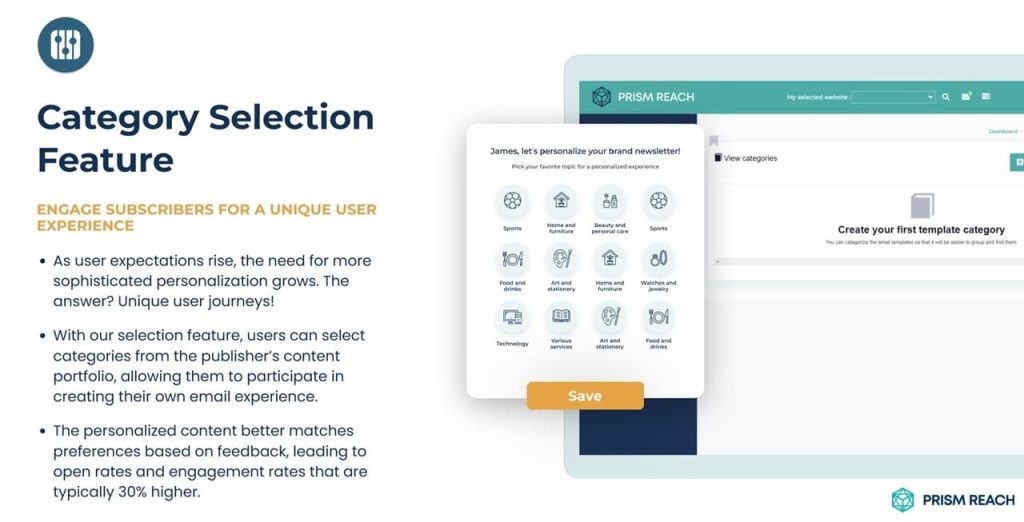
Compliance and Data Privacy
Prism Reach emphasizes GDPR compliance and hosts data within Europe, adhering to the highest standards of data protection. This focus on privacy is crucial for building trust with users and complying with international regulations.
Future Prospects
Looking ahead, Prism Reach aims to expand its technology into the eCommerce sector and explore new ways to leverage AI for broader marketing applications. The company is committed to the continuous improvement of its AI algorithms, ensuring that its solutions remain at the cutting edge of technology and marketing innovation.
Upgrade Your Email Marketing with AI Personalization!
Conclusion
The choice between ConvertKit and Substack ultimately depends on your specific needs, goals, and level of technical expertise. ConvertKit offers a comprehensive suite of tools for those seeking advanced marketing automation and customization. Substack provides a straightforward platform for content creators focused on writing and monetizing newsletters.
However, for those looking to combine the best of both worlds – advanced personalization with content-focused simplicity – Prism Reach presents an innovative solution. Prism Reach’s AI-powered personalization takes email marketing to the next level, offering deep customization that goes beyond what traditional platforms provide. By leveraging AI to understand and predict subscriber preferences, Prism Reach delivers content that is not only relevant but also timely, enhancing the overall impact of digital marketing campaigns and fostering stronger connections between publishers and their audiences.